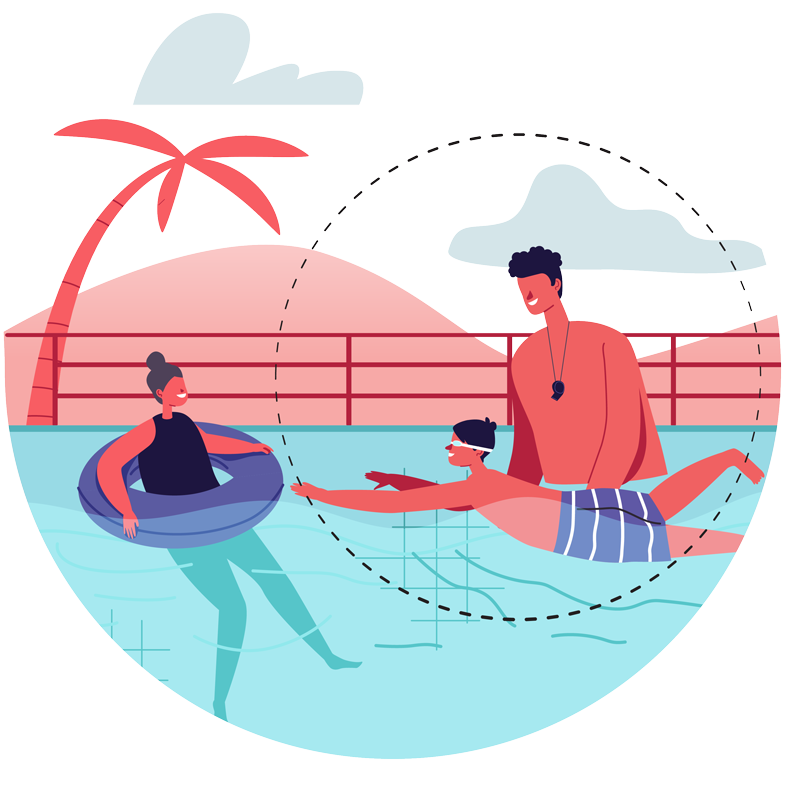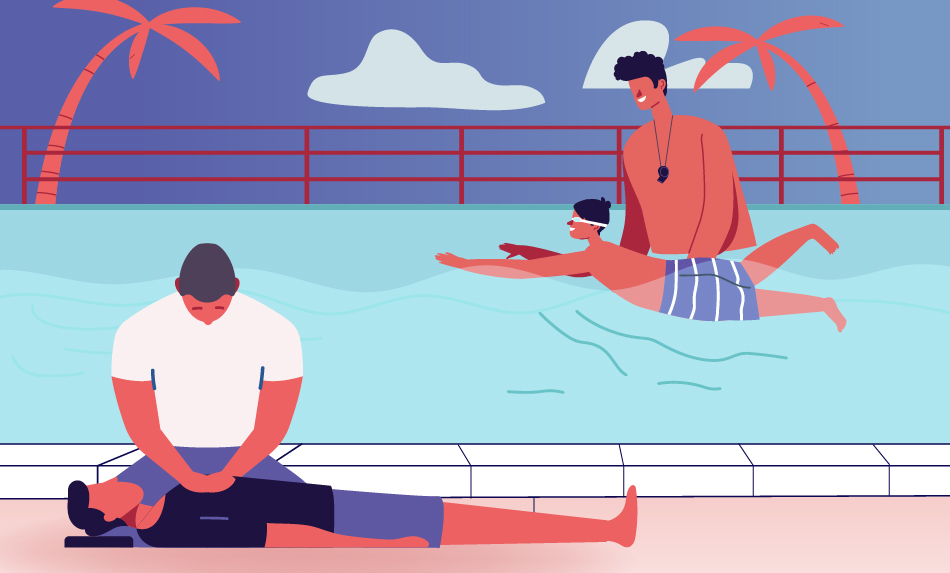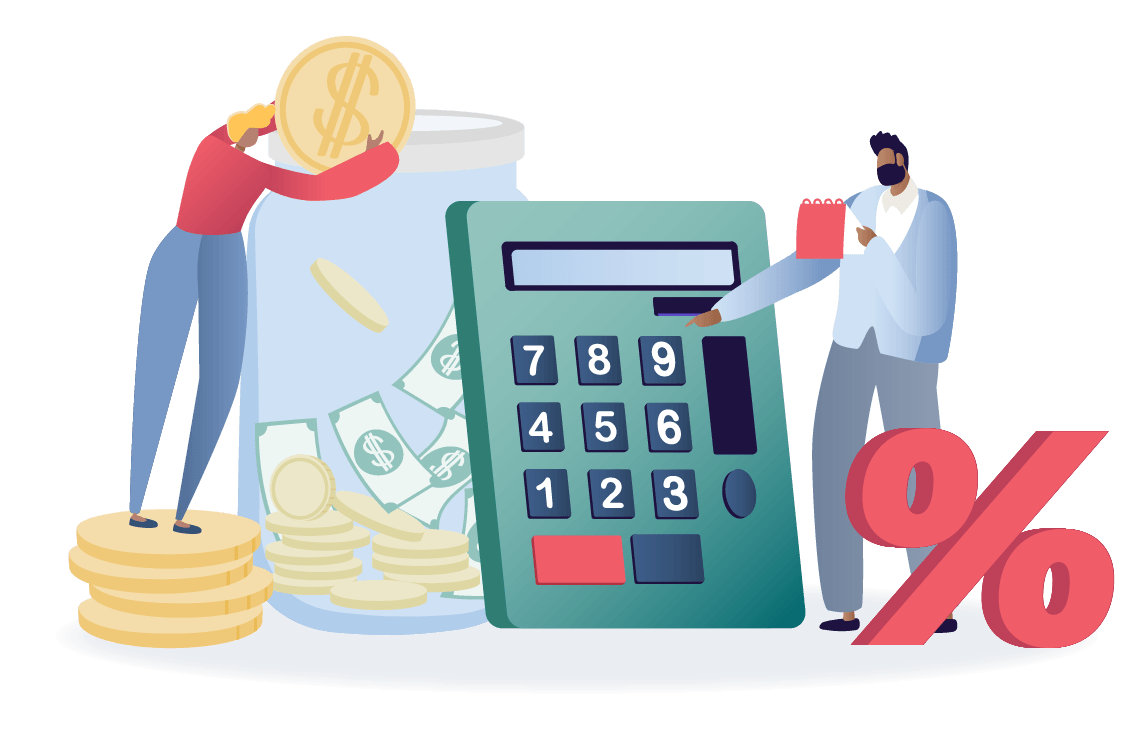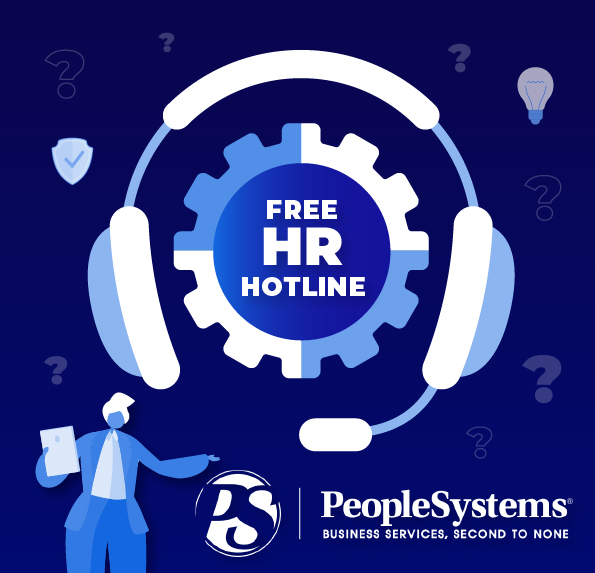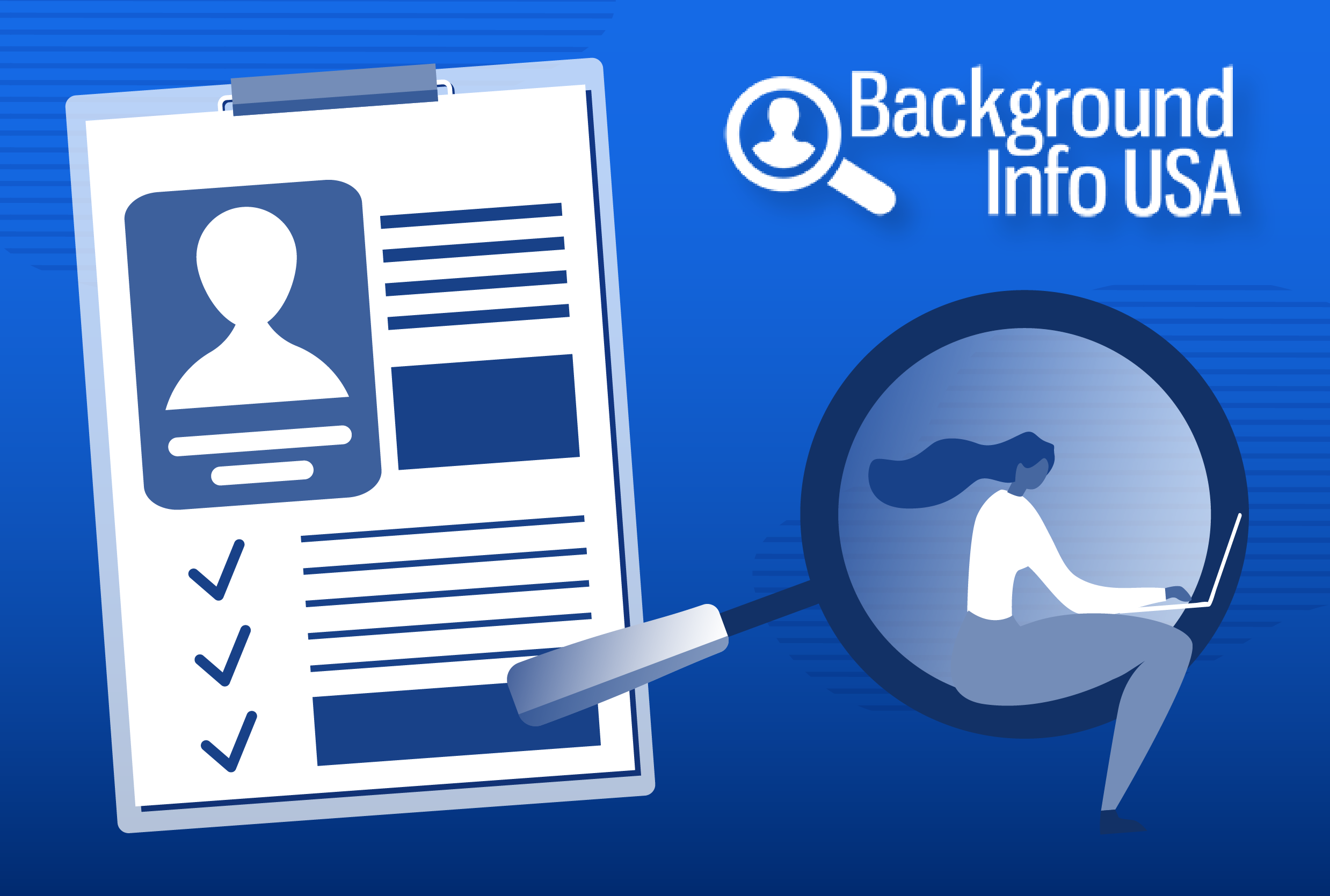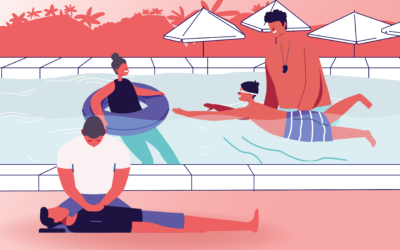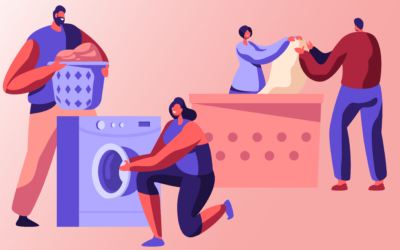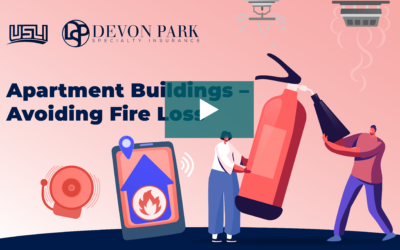While home and community pools serve as beloved areas of activity in warm weather, they can pose life-threatening risks. Keep reading to learn how you can make pool time safe and enjoyable.
What’s the Big Deal?
Recent statistics indicate:
- Drowning is the leading cause of unintentional death for children ages one to four and the second leading cause of unintentional death for children under the age of 14
- Children of color are at a much higher risk of drowning
- Black children are at four times the risk of drowning
- Latinx children are at three times the risk of drowning
- Most drowning incidents involving children between the ages of one and four take place in home swimming pools
- Many of these incidents happen very suddenly — about five minutes or less — while parents are home
- Drowning incidents in home pools are a problem in every state, but in warm weather states like Arizona, California and Florida, where pools are more common, the problem is very serious
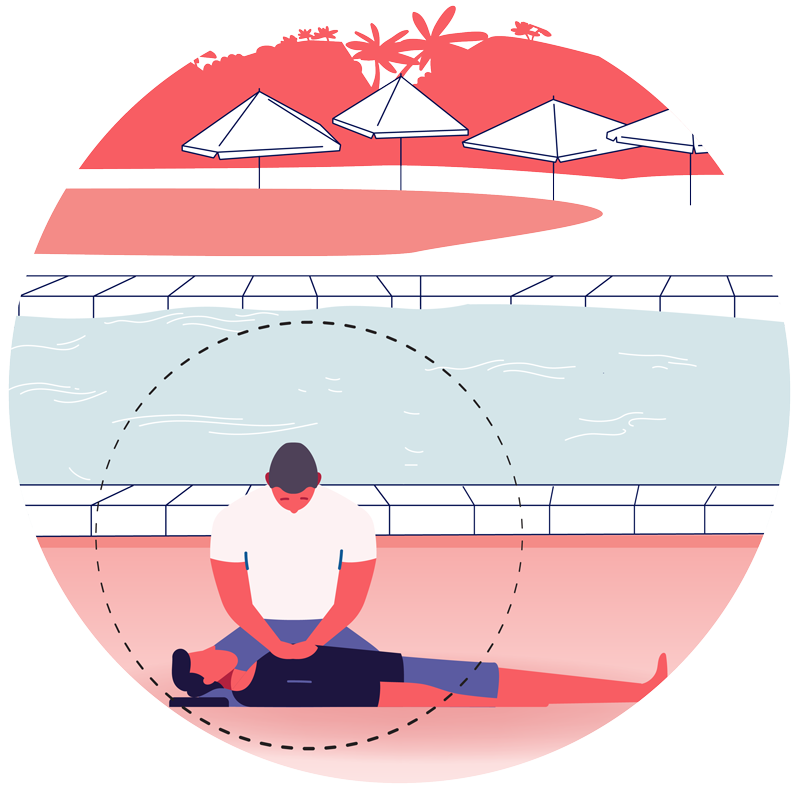
Pool Safety Rules
Follow these fundamental steps to keep your backyard oasis safe for children:
- Be present. Always have an adult monitoring children in or near the pool.
- Install fencing and pool alarms. Adequate barriers prevent unsupervised access.
- Learn CPR; this can be the difference between life and death if an accident happens.
- Stay away from drains, and tie up loose hair and clothing so they don’t get caught.
- Encourage those present to wear safety vests. Look for U.S. Coast Guard-approved life jackets.
- Post pool rules to show their importance. Enforce them without exception.
- Hire a Red Cross-trained lifeguard when having a pool party. If this is not possible, appoint responsible adults to supervise the pool constantly.
- Have life safety/rescue equipment within reach of the pool.
- Make sure children know the pool area is off limits without constant, active adult supervision.
- Be sure the pool drain is up to code and not worn or cracked.
Pool and Spa Barriers
Adequate barriers for pools and spas are important to keep kids safe and prevent unsupervised access. But what works best?
- For pools: fencing and gates
- For spas and hot tubs: covers with locks
Swimming pools should be completely enclosed by a fence that complies with local code requirements. The fence should be equipped with a locking device to further restrict access. The U.S. Consumer Product Safety Commission recommends:
- Fences should be at least 48 inches high, but local code may require a 60-inch height
- Any baluster openings should be small enough to prevent a four-inch sphere from passing through
- All access gates should open away from the pool and be both self-closing and self-latching
